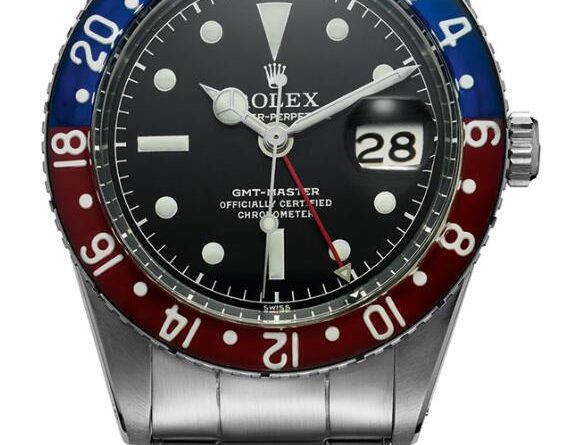In-Depth: The Best Quality Rolex Oyster Perpetual GMT-Master II Fake Watches Online UK, Materials And Mechanisms
Perhaps the most recognisable travel watch in history, the perfect 1:1 Rolex Oyster Perpetual GMT-Master replica watches was launched in 1955, just as the world was entering the Jet Age of intercontinental travel. The inaugural GMT-Master model was the ref. 6542 that sported a distinctive bezel colour-coded in red and blue to distinguish day- and night-time.
The coloured bezel would go on to become a defining feature of the GMT-Master and iconic within the wider genre of travel watches. Originally made of fragile Plexiglas, the bezel evolved into a robust anodised aluminium insert in 1959, the same year the AAA wholesale Rolex GMT-Master fake watches became the official watch of Pan American World Airways, better known as Pan Am, then the world’s biggest airline.
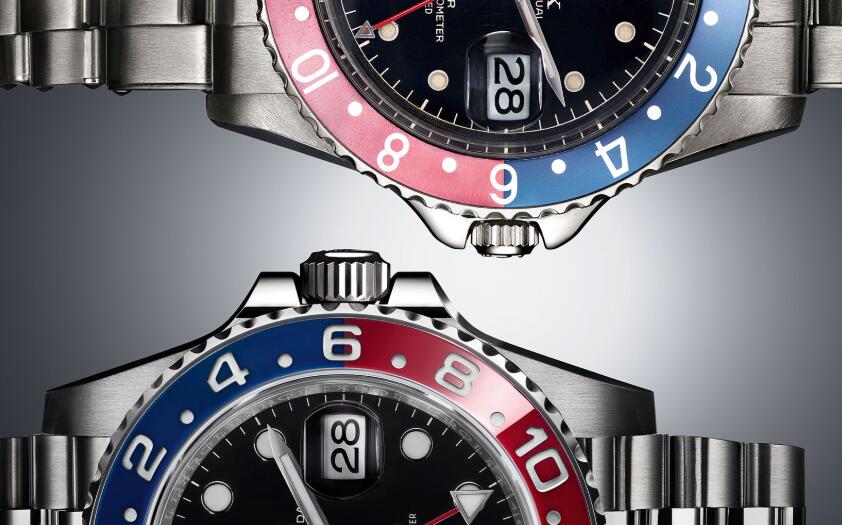
The top Swiss replica Rolex GMT-Master watches earned iconic status with its functionality and technical excellence, but equal credit goes to the notable personalities individuals wearing a GMT-Master who witnessed, or even made, history.
Astronaut Edgar Mitchell wore one on the Apollo 14 mission that landed on the Moon in February 1971. Several United States Air Force pilots set speed records while wearing cheap Rolex GMT-Master copy watches, including William J. Knight in 1967. And Val Kilmer sported one while playing Iceman in Top Gun.
Evolution
In the following decades, the GMT-Master continued to evolve, with a landmark moment arriving in 1982 when the Swiss movements Rolex GMT-Master II replica watches was introduced. Despite the subtle change in model name, the technical and functional evolution was major: the GMT-Master II incorporated an independently adjustable local-time hour hand, making the changing of time zones easy and quick.
Throughout the model’s evolution over the years, the GMT-Master and GMT-Master II retained the coloured bezel, both as a functional and design element. In 2005, Rolex unveiled its first-ever ceramic bezel insert on the GMT-Master II, but in a single colour of black.
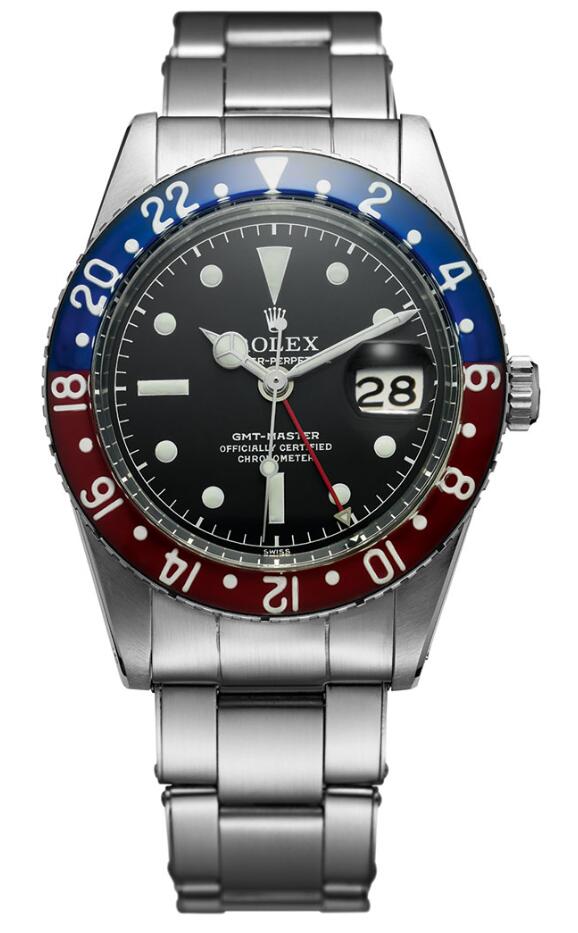
It was only in 2013 that the two-colour, monobloc ceramic insert arrived on the luxury Rolex GMT-Master II super clone watches. Originally launched in blue and black, the two-colour insert of ceramic – later christened Cerachrom – has since grown to encompass a variety of colours, including the red and blue of the original model of 1955.
Materials science
Beyond its movement construction prowess, best Rolex replica watches also devotes substantial resources to material science and engineering. The brand famously operates its own foundry to alloy its own precious metals including Everose gold. Even the steel alloy employed by Rolex is Oystersteel, otherwise known as 904L, which boasts superior corrosion resistance, instead of the common 316L widely used in watchmaking.
Rolex employs advanced material science inside its movements as well. Examples include the friction-reducing coating on the winding reverser wheels and the non-magnetic Parachrom blue hairspring that is unique to Rolex in watchmaking.
But perhaps the most iconic example of materials science at Rolex is the two-colour Cerachrom bezel insert of the GMT-Master II. In 2005, Rolex introduced the Cerachrom bezel insert for the fake Rolex GMT-Master II watches shop in a single colour of black. It was only in 2013 that the first-ever two colour Cerachrom bezel insert arrived – in blue and black. That was followed by the red and blue Cerachrom insert a year later, a homage to the original GMT-Master of 1955.
The decade it required to advance from a single colour to two-tone illustrates the complexity of the engineering behind this deceptively simple component. And the development process continues: since its introduction in 2014, the red and blue Cerachrom bezel insert has subtly evolved in substance and colour as Swiss made Rolex copy watches improved the technology behind it.
Ceramics are mostly either zirconia-based or alumina-based. Watchmakers in general favour zirconia-based ceramic because it has greater density and resistance compared to its alumina-based counterpart. Raw zirconia-based ceramic is a greenish powder that can then be infused with a limited array of colours by way of pigmentation during or after the moulding process.
The single-colour Cerachrom bezel inserts of 2005 were made of zirconia-based ceramic, and still are today. However, the development of a bicolour Cerachrom bezel insert led to the discovery of the fact that certain colours did not work with zirconia, leading to the switch to alumina-based ceramic in order to perfect the two-colour bezel.
European patent EP2746243B1 filed by high quality replica Rolex watches in 2013 details the ideal composition of ceramic in an alumina-based ceramic bezel: composed by weight of 96.7-97.9% alumina and 1.5-2.9% chromium oxide along with small traces of rare earth metals. The result is describes as a “technical ceramic body [showing] high strength and [displaying] a beautiful red colour”. The material is then moulded and heated to high temperatures between 850°C and 1300°C to sinter the ceramic.
The patent then goes on to describe the colour impregnation method involving a second pigment being applied to the red ceramic base. To achieve the desired blue, the patent lists cobalt, zinc and iron as possible pigments, each resulting in a different blue hue. The process works by infusing the pigment into the porous surface of the untreated alumina-based ceramic. The pores in the ceramic allow the material to absorb the pigment solution, colouring the section exposed to the solution. The whole component is then baked once again so that the bond between the ceramic and pigments is strengthened.
The result of the sintering processes is a bicolour monoblock ceramic bezel insert that has a sharply defined border between the red and blue sectors. Since the second pigment is not a mere surface coating but microscopically infused onto the base material, the blue colour cannot be worn off or removed.
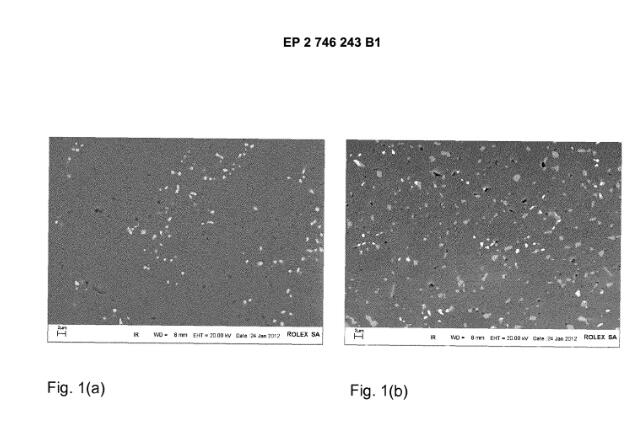
The two plates above from patent EP2746243B1 illustrate the microstructure of the base red ceramic in fig. 1(a) and the pigmented blue section in fig. 1(b). Note that the blue portion is structurally different from red, although both are fundamentally the same material, illustrating the deep penetration of the pigment.
The production method is innovative and customisable in the sense that the colour combinations can be easily altered by tweaking the pigmentation and bonding processes.
The 2013 patent noted that due to the many variables in the pigmentation process, the results may not be always consistent. Rolex fake watches for men has improved the bezel insert colouring process over the decade since the first two-colour Cerachrom bezel inserts were launched, resulting in darker and stronger colours consistent across batches. While the actual number is unknown, it is likely that the rejection rate of two-colour ceramic bezel inserts is relatively high compared to that of single-colour inserts.
Since 2013, Rolex has filed several more related patents concerning the manufacturing of brown, green, and black ceramic components, reflecting Rolex’s commitment to improving the quality of its timepieces. Earlier in 2024, a patent was granted to Rolex for a red and black zirconia-based ceramic bezel insert, which indicates a new colour combination might be coming to the GMT-Master II one day.
Jumping hands
Aside from its aesthetics, the best quality Rolex GMT-Master II replica watches is defined by its ability to tell the time in multiple time zones via a 24-hour GMT hand that works in conjunction with the 24-hour scale on the rotating bezel.
The GMT-Master II is “true” GMT” in watch enthusiast parlance, because the local time hour hand is independently adjustable, backwards and forwards.
In contrast, the original GMT-Master of 1955 relied on a simpler solution: the local time hour hand and 24-hour GMT hand were fixed in relation to each other, and neither could not be set independently of the other. As a result, tracking different time zones was accomplished by rotating the 24-hour bezel.
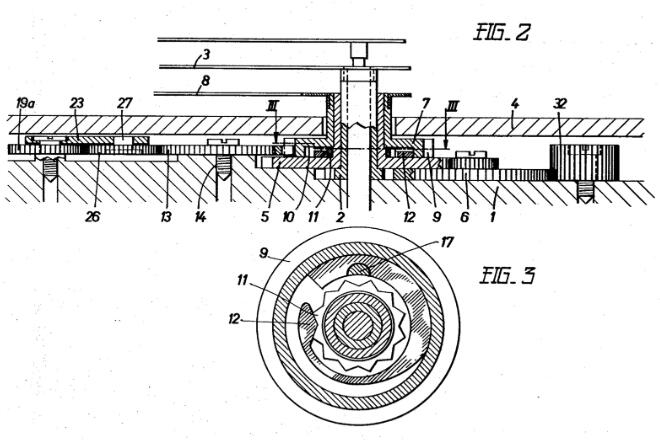
This changed with 1969 Swiss patent CH957569A4 filed by Rolex that described an hour hand capable of stepped adjustment in a straightforward system, which later made its way into the GMT-Master II of 1982 that featured independently-adjustable local time hour hand that could be advanced both forwards and backwards in one hour increments. Compared to other multi-time zone watches of the period, the fake Rolex GMT-Master II watches store was remarkably simple yet functional.
The mechanism described in the patent starts with the local-time hour hand that makes one full rotation every 12 hours. It is linked to a disc 9 engaged with a star wheel 11 by a spring. Co-axial with the hour hand arbor, the star wheel 11 has 12 wide teeth on its rim. Spring 12 is lightly coiled inside disc 9, with one end fixed in-between star wheel 11’s teeth.
When the user desires adjusts the hour hand in one-hour steps, a pivoting clutch meshes with the rim of disc 9, turning it in steps relative to the hour arbor, guided by spring 12. This does not disturb the running of the Rolex replica watches site in any way and the other displays remain unaffected. The hour hand can be moved both forwards and backwards, without any influence down the going train.
That patent also made the interesting and reasonable point of having the independent hour adjustment come before the full time setting position on the crown. The logic was sound: when the wearer wants to change the time when traveling, pulling the crown through the full time setting mode is pointless. Moreover, it could lead to unintended disturbance to the time synchronisation of the minute hand, possibly affecting accuracy.
The hour hand-setting system has evolved over the years, but the basic principle remains the same. When the first Cerachrom bezel insert debuted in the GMT-Master II of 2005, it also saw the introduction of the cal. 3186.
The movement introduced a jumping hour hand module that is not co-axial with the central arbor. Instead, the module sits beside the central arbor and is more compact, as it is built around a pinion.
Due to advantageous gearing, the pinion module can move in 90-degree steps, while the hour hand only jumps 30 degrees. This system imposes less wear on its parts while allowing for more precise setting and more tactile feedback to the user via the crown.
The same system, albeit with some improvements in geometry and spring placement, is now found in the cal. 3285 of 2018 that is now standard across all GMT-Master II models.
